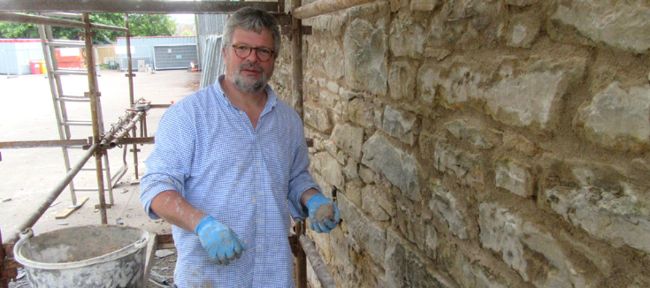‘We should have the right buildings in the right places’
The Church of Scotland’s first new Presbytery Buildings Officer tells Jackie Macadam about his new role.

The Rev Ian Murray
THE Rev Ian Murray is a trailblazer. He’s the first Presbytery Buildings Officer to be appointed as the Church of Scotland moves towards fewer, larger presbyteries.
His role is to support the Presbyteries of the North East and Northern Isles in assessing, recording and monitoring the condition of all ecclesiastical buildings and helping congregations plan and prioritise their fabric repairs and improvements.
“The role covers a broad spectrum of responsibilities,” Ian says. “Sometimes concerning procedures and regulations, other times supporting congregations in their responsibility for the care, maintenance, repair and, occasionally, redevelopment of buildings.
“The day-to-day work is hugely varied, from dealing with issues concerning planning legislation and questions about repairs, restoration or conservation, to visiting churches throughout the region to conduct condition survey reports or advise on specific issues. It’s one of those roles which brings you into contact with every level and department within the Church.”
Ian was a parish minister in Highland Perthshire for nine years followed by a further six in a team ministry in the Angus Glens. More recently, he has served as an interim minister in the Borders, Aberdeen and Shetland, often working in situations involving the future of church buildings and how they are used as a resource for mission and outreach.
He says: “I’ve grown to appreciate the attachment many of us have to buildings, but also the burden of care and maintenance many congregations carry.”
Ian started work in his new role in June this year. His work is with the current presbyteries of Aberdeen and Shetland, Buchan, Gordon, Kincardine & Deeside, and Orkney, which are expected to become one presbytery as the process of mergers continues.
The post is funded 50/50 by the presbyteries and the General Trustees, and is a three-year pilot.
Another significant part to the role has been helping to develop and pilot the new Asset Management Buildings Audit across the presbyteries. This helps the General Trustees manage the national church’s buildings as assets, but it also contributes to the Presbytery Planning process, enabling Presbyteries and the General Trustees to better understand how valuable a resource a particular building is for the churches mission and outreach, in a particular locality.
“With a reduction in the allocation of ministry, good Presbytery Planning is essential, and by the end of the process, we should hopefully have the right buildings, in the right places, well equipped and ready to meet the future needs of the Church,” says Ian.
“There is no doubt that these past two years of living with Covid-19 has had a significant impact on the Church in lots of different ways. Through lack of use, some buildings have deteriorated during that time, but there’s also the financial impact and reality that some buildings have not reopened.
“That said, we’ve also changed as a church, with new and emerging ways of worship and outreach using virtual technology. These experiences raise lots of questions about the necessity of some of our buildings.”